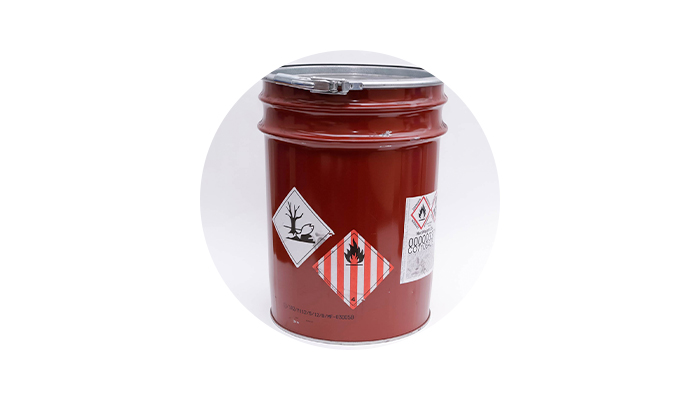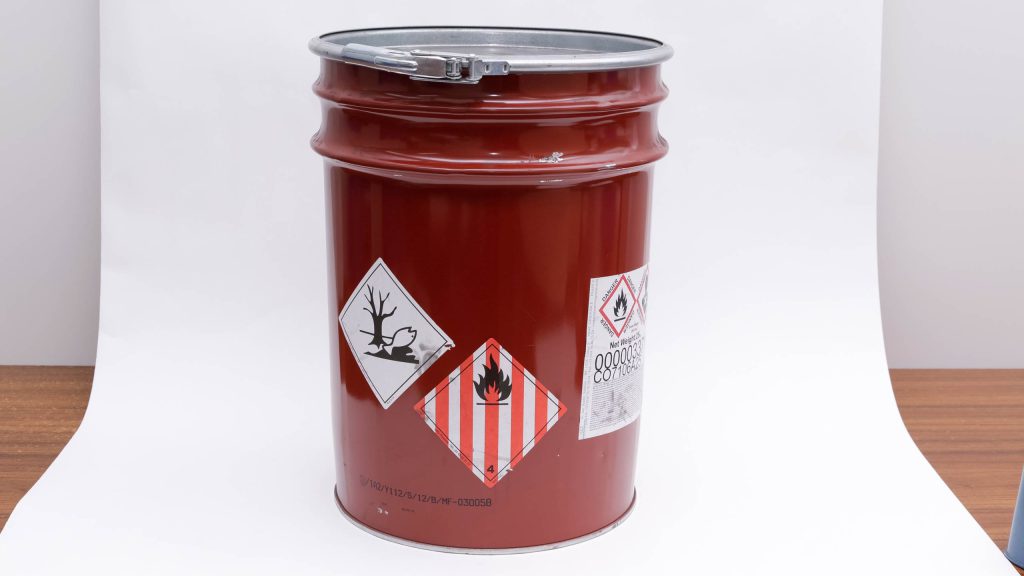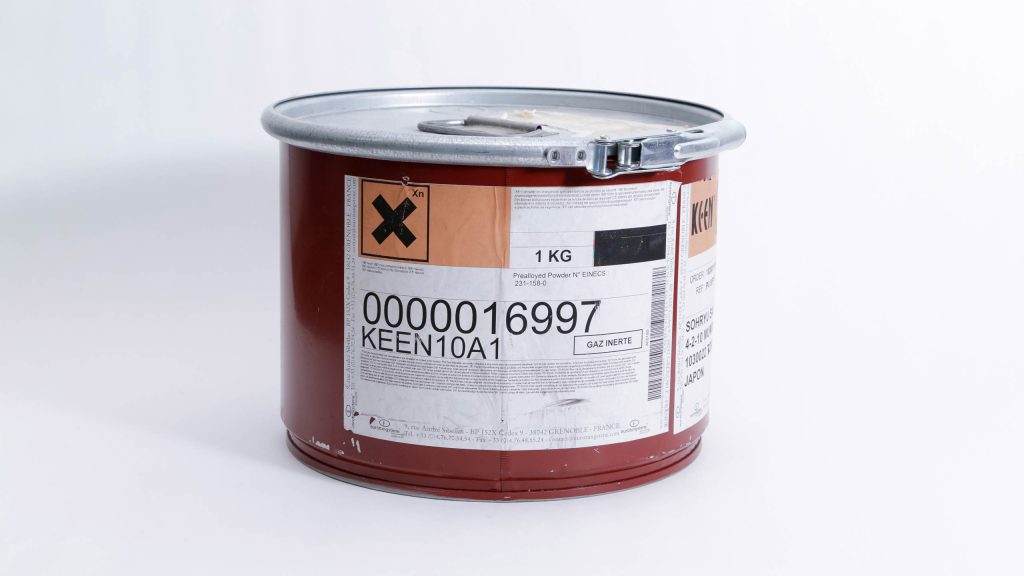
Metal powder
Umicore has been producing and offering all kinds of binders for the diamond tool industry. (Various types of metal powders including cobalt, NEXT®, Keen® and other additives.)
The company is renowned for a wide range of high-quality products, prepares various types of metal powders for diamond tools, and supplies a wide variety of additives in order to meet customers’ needs:
・Tungsten, tungsten carbide, fused tungsten carbide powders
・Carbonyl iron
・Copper, tin, bronze powders
・Nickel powder
Premixed powders of cobalt, NEXT®, and Keen® are produced by adding the above metal powders. In addition, rhenium powder and iron phosphide are available. The company offers a wide selection of additives, providing global solutions for a wide range of industries including diamond tool industry.
Manufacturer introduction
Based in Brussels, Belgium, Umicore (formerly Eurotungstene) is a global manufacturer in the production, conversion, and recycling recovery of catalysts and nonferrous metals. The organization of several mining and smelting companies, now known as Umicore, has a history of more than 200 years since its predecessor was founded in 1805.
Umicore offers a wide variety of cobalt and alloy powders, primarily for diamond tools and superalloys, for use in stone cutters, construction, metal cutting tools, and consumable parts. Product applications are diverse and include one of the essential raw materials for the growing secondary battery industry, rubber tire manufacturing, pigments for the ceramic industry, catalysts for paint drying and resin production, and surface treatments.
Tungsten powder Grades
| Grade | Fisher grain size (μm) |
| AW2110 | 1.3-1.7 |
| AW2118 | 2.1-2.9 |
| AW2123 | 4.0-5.0 |
| AW2130 | 5.4-6.6 |
| AW3110 | 8.0-9.0 |
| AW3105 | 10.5-13.5 |
The company makes tungsten powder from high quality tungsten and offers the most suitable lineup for diamond tools. Its very narrow grain size distribution makes the dispersibility better. By adding tungsten powder, it is possible to improve diamond holding power.
Tungsten carbide powder Grades
| Grade | Fisher grain size (μm) |
| CW5000 | 0.8-1.0 |
| CW5400 | 2.2-2.8 |
| CW5522 | 2.6-3.4 |
| CW5622 | 3.1-3.9 |
| CW5722 | 4.5-5.5 |
The addition of CW powder in the matrix increases the hardness and the abrasion resistance of the tools.
Fused tungsten carbide powder Grades
| Grade | Fisher grain size (μm) | Mesh |
| CF1118 | 250 – 450 | 40 – 60 |
| CF1122 | 150 – 250 | 60 – 100 |
| CF1126 | 106 – 150 | 100 – 140 |
| CF1129 | 75 – 106 | 140 – 200 |
| CF1133 | 38 – 75 | 200 – 400 |
| CF1136 | <45 | 400 |
These powders provide a great hardness and an outstanding abrasion resistance.
Nickel range Grades
| Grade | Fisher grain size (μm) | Nickel | Scott density (g/c㎡) |
| NI2500 | 2.0 – 2.8 | >99.7 | 0.50 – 0.65 |
Bronze powder Grades
| Grade | Alloy composition (%) | Apparent density (g/c㎡) | Cut (%) | |
| Atomized Bronze powders (Irregular shape) | BR2299 | Cu60 – Sn40 | 2.5 – 3.2 | <32 |
| BR2302 | Cu80 – SN20 | 2.3 – 3.0 | <45 | |
| BR2305 | Cu80 – Sn20 | 2.6 – 3.4 | <32 | |
| BR2314 | Cu85 – Sn15 | 2.6 – 3.4 | <32 | |
| BR2328 | Cu90 – Sn10 | 2.9 – 3.5 | <45 | |
| BR2331 | Cu90 – Sn10 | 2.9 – 3.5 | <32 | |
| BR4043 | Cu85 – Sn15 | 2.6 – 3.2 | <45 | |
| Atomized Bronze powders (Spherical shape) | BR1351 | Cu89 – Sn10.7 – P0.3 | 4.4 | <45 |
Electrolytic Copper (produced by Ecka-granules) Grades
| &bnsp; | Oxygen (%) | Apparent density (g/c㎡) | Cut (μm) |
| CU1182 | <0.25 | 0.9 – 1.1 | <45 |
| CU1197 | <0.15 | 1.4 – 1.6 | <63 |
| CU1225 | <0.15 | 2.0 – 2.3 | <63 |
| CU1232 | <0.20 | 1.8 – 2.2 | <63 |
| CU5650 | <0.12 | 1.75 – 1.95 | <63 |
| CU5761 | <0.17 | 1.2 – 1.35 | <63 |
This range of Copper powders improves free-cutting and allows the adaptation of the bond to the cutting of soft material.
Tin(ecka-granules) powder Grades
| Grade | Alloy composition (%) | Scott density (g/c㎡) | Cut (μm) |
| SN2381 | Sn > 99.85 | 3.2 – 3.8 | <45 |
These Tin powders can be used straight as an additive or be pre-mixed to fine Copper powders to make customized Bronze compositions.
Rhenium powder Grades
| Grade | Oxygen (%) | Rhenium (%) | Fisher grain size (μm) |
| RE1103 | <0.35 | 99.95 | 3.0 – 5.0 |
Its melting point is the second highest next to that of tungsten. It is used as a material for high-vacuum electron tubes and heat resistant alloys.
Iron phosphide Grades
| Grade | Oxygen (%) | Phosphorus (%) | Theoretical density (g/c㎡) | Scott density (g/c㎡) | Tap density (g/c㎡) | Grain size distribution | ||
| d10 (μm) | d50 (μm) | d90 (μm) | ||||||
| FEP10 | 0.6 | 10 | 7.52 | 1.8 | 3.2 | 3.0 | 6.0 | 12.0 |
Packing
We supply products on a metal drum with a polyethylene inner bag. For drum sizes, please contact us.


